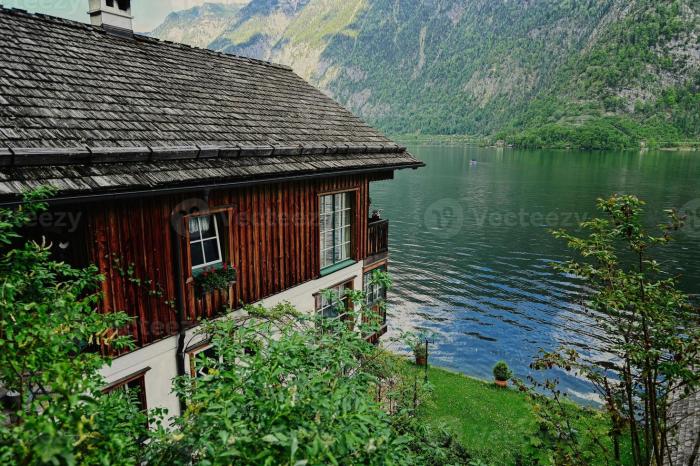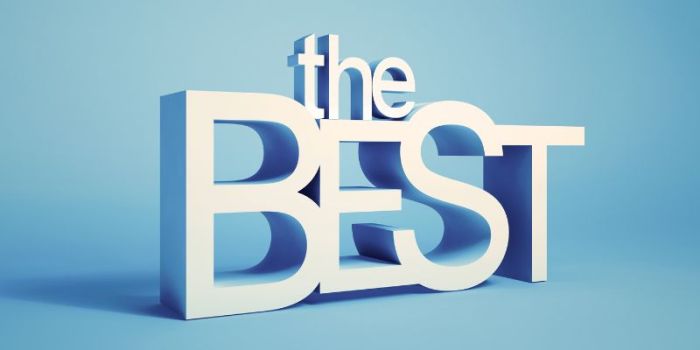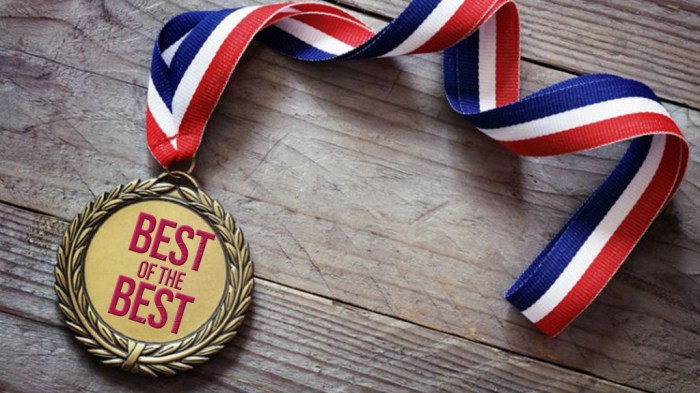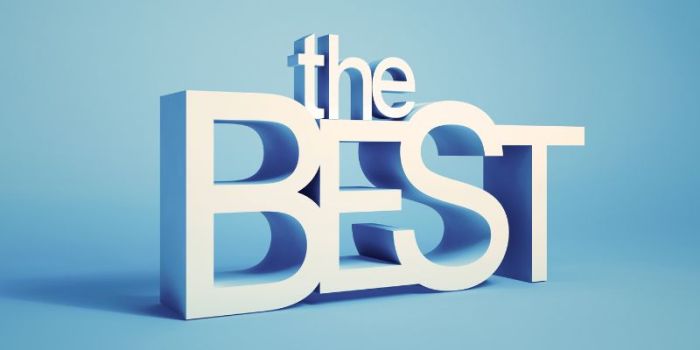Best road trips in Morocco offer a breathtaking journey through diverse landscapes, vibrant cultures, and historical sites. From bustling souks to serene desert landscapes, Morocco’s roads promise an unforgettable adventure. This guide dives deep into the best routes, highlighting must-see destinations, essential planning tips, and unforgettable experiences to help you craft your perfect Moroccan road trip.
This exploration of Morocco’s best road trips covers everything from choosing the right time to visit, to finding the perfect accommodation and food. We’ll also delve into the unique character of Moroccan landscapes and the cultural richness you’ll encounter along the way. Get ready to be inspired!
Introduction to Moroccan Road Trips
Morocco’s diverse landscapes, vibrant culture, and rich history make it an ideal destination for a memorable road trip. From the towering Atlas Mountains to the sun-drenched coastal plains, the country offers a tapestry of experiences that cater to every traveler’s taste. Unveiling hidden oases, encountering bustling souks, and immersing yourself in Berber culture – these are just a few of the captivating moments awaiting those who embrace the open road in Morocco.
The freedom and flexibility of self-drive travel allow you to truly connect with the country and its people.The allure of Moroccan road trips extends far beyond the scenic beauty. The country’s history is deeply intertwined with travel. Caravans have traversed these routes for centuries, carrying goods and ideas across the Sahara and beyond. This rich heritage resonates in the architecture, the local markets, and the hospitality of the people you’ll encounter.
Modern road networks have preserved and enhanced these historical pathways, allowing travelers to follow in the footsteps of traders and explorers, experiencing a tangible connection to Morocco’s past.
Moroccan Landscapes and Their Influence on Road Trips
The diverse topography of Morocco profoundly shapes the road trip experience. The country’s landscapes range from the dramatic peaks of the High Atlas Mountains, where Berber villages cling to the sides of canyons, to the arid expanses of the Sahara Desert, where vast sand dunes stretch to the horizon. The coastal regions offer a stark contrast, with beautiful beaches and turquoise waters.
This incredible variety ensures that each leg of your journey offers a unique and captivating vista. The undulating terrain, punctuated by ancient kasbahs and vibrant villages, contributes significantly to the visual narrative of the journey. The transition from one landscape to another is often seamless, with each vista providing a new and exciting chapter in your road trip narrative.
Historical Context of Road Travel in Morocco
“The roads of Morocco are not just routes; they are threads that weave together the country’s history.”
For centuries, the roads of Morocco have served as vital arteries of trade and cultural exchange. Ancient caravan routes crisscrossed the country, connecting cities and villages. The passage of traders, pilgrims, and travelers brought about the exchange of goods, ideas, and traditions. This historical significance continues to resonate today, with many historic sites and landmarks situated along these ancient routes.
Modern roads have, in many instances, followed the path of these ancient trails, allowing visitors to experience a connection to the past while navigating the present.
Morocco’s stunning landscapes are perfect for epic road trips, offering incredible scenery and vibrant culture. While exploring the desert highways, you might also be interested in luxurious beachside escapes like those found at hotels resorts beach hotels soho house first caribbean property canouan. Thinking about the perfect accommodations to relax after a day of exploring the souks and bustling cities, Morocco still has amazing road trips to enjoy.
Cultural Experiences Along the Road
The richness of Moroccan culture is deeply embedded in the country’s everyday life. Encountering local markets, or souks, is an essential part of any road trip. These vibrant marketplaces are filled with colorful displays of textiles, spices, and local crafts, providing a captivating glimpse into Moroccan artistry and commerce. The hospitality of the Moroccan people is legendary, with locals often going out of their way to welcome visitors and share their culture.
Interactions with local communities are opportunities to learn about their traditions, customs, and daily routines. Staying overnight in a traditional riad or a guesthouse provides a chance to immerse yourself further in the local ambiance and enjoy the warm welcome of the Moroccan people.
Morocco’s stunning landscapes are perfect for epic road trips, but planning the perfect one can be tricky. Thinking about the best trips for thirty year olds, like those looking for unforgettable experiences and a mix of adventure and relaxation, is key. trip ideas best trips for thirty year offers great inspiration, and the Moroccan desert highways offer some amazing options.
Ultimately, the best road trips in Morocco are tailored to the traveler’s interests and budget, whether you’re looking for a quick weekend getaway or a multi-week adventure.
Key Considerations for Moroccan Road Trips
Planning a road trip in Morocco requires careful consideration of several factors. Weather conditions can vary significantly across the country, ranging from scorching desert heat to chilly mountain temperatures. Therefore, proper clothing and appropriate equipment are essential. Furthermore, traffic conditions can be unpredictable, and navigating unfamiliar roads may require patience and flexibility. Safety precautions are crucial.
Respecting local customs and traditions is paramount, ensuring smooth and enjoyable interactions with the local community.
Top Destinations for Road Trips

Morocco’s stunning landscapes and vibrant culture make it a dream destination for road trips. From the bustling souks of the cities to the serene valleys of the Atlas Mountains, the journey itself is as captivating as the final destination. Embarking on a Moroccan road trip offers an immersive experience, allowing you to connect with the local communities and witness the country’s rich tapestry of history and tradition.
Must-See Destinations
Exploring Morocco by car unlocks a world of hidden gems and unforgettable experiences. These five destinations offer a taste of the diverse beauty and captivating culture that awaits.
- Marrakech: The vibrant heart of Morocco, Marrakech pulsates with life. Explore the Djemaa el-Fna square, a mesmerizing spectacle of storytellers, snake charmers, and food vendors. Wander through the souks, where intricate crafts and spices fill the air, and lose yourself in the labyrinthine alleyways. Visit the Bahia Palace, a breathtaking example of Moroccan architecture. The bustling atmosphere and unique experiences in Marrakech make it a must-see for any road trip enthusiast.
- Essaouira: This coastal town boasts a laid-back atmosphere and a beautiful beach. Explore the old medina, a charming collection of narrow streets and artisan workshops. Enjoy fresh seafood at one of the beachfront restaurants. Essaouira’s unique blend of Moroccan and European influences creates a captivating experience, perfect for relaxing and soaking up the atmosphere.
- Chefchaouen: Nestled in the Rif Mountains, Chefchaouen is a picturesque blue-washed town. Wander through the charming streets, discovering unique shops and art galleries. Enjoy breathtaking views of the surrounding mountains. The town’s distinctive architecture and tranquil atmosphere make it a perfect place to escape the hustle and bustle of everyday life.
- Desert Road Trip: Immerse yourself in the vast beauty of the Sahara Desert. Enjoy dune bashing, camel riding, and stargazing under the clear desert sky. Experience the magic of the desert with its breathtaking landscapes and unique cultural encounters. Overnight stays in Berber camps add to the authenticity of this experience. This trip requires careful planning, especially concerning accommodations and potential weather conditions.
- Atlas Mountains: Explore the majestic Atlas Mountains, traversing through valleys and across high-altitude passes. Visit Berber villages, witness stunning landscapes, and hike through breathtaking trails. The Atlas Mountains offer a profound connection to nature, providing an opportunity for adventure and contemplation.
Scenic Routes
The roads connecting these destinations often offer breathtaking scenery. Driving through the High Atlas Mountains, for example, reveals stunning vistas and rugged landscapes. The route between Marrakech and Essaouira follows the coast, offering a glimpse of the Atlantic Ocean’s beauty. Careful planning and consideration of road conditions, especially in mountainous areas, are vital for a safe and enjoyable trip.
Driving Times
| Destination | Key Attractions | Driving Time from Marrakech | Driving Time from Essaouira | Driving Time from Chefchaouen |
|---|---|---|---|---|
| Marrakech | Djemaa el-Fna, Bahia Palace, souks | N/A | ~5 hours | ~8 hours |
| Essaouira | Coastal town, medina, beaches | ~5 hours | N/A | ~10 hours |
| Chefchaouen | Blue-washed town, Rif Mountains | ~8 hours | ~10 hours | N/A |
| Desert Road Trip | Dune bashing, camel riding, stargazing | ~6-8 hours | ~8-10 hours | ~12+ hours |
| Atlas Mountains | Berber villages, stunning landscapes | ~3-4 hours | ~7 hours | ~6-7 hours |
Note: Driving times are approximate and can vary depending on traffic and road conditions. Be prepared for potential delays, especially in mountainous regions.
Planning Your Moroccan Road Trip
Embarking on a Moroccan road trip is an adventure waiting to be explored. From the bustling souks to the serene Atlas Mountains, Morocco offers a tapestry of experiences. Careful planning is key to ensuring a smooth and enjoyable journey, maximizing your time and minimizing potential hiccups.Thorough preparation allows you to focus on the journey itself, rather than constantly worrying about logistics.
This section provides a step-by-step guide to help you organize your Moroccan road trip from start to finish.
Visa Requirements
Morocco offers visa-free entry for many nationalities for a specific period. However, it’s crucial to verify the specific visa requirements based on your nationality and intended stay. Check the Moroccan embassy website for updated information and required documents. Ensure your passport is valid for at least six months beyond your intended stay. This proactive step prevents unexpected delays at the border.
Accommodation Options
Morocco boasts a wide range of accommodation options, from budget-friendly guesthouses to luxurious riads and hotels. Consider your preferences and budget when choosing your lodging. Booking in advance, particularly during peak season, is recommended. Local guesthouses often provide a more authentic cultural experience, allowing you to interact directly with the local community. Alternatively, larger hotels provide amenities and a more standardized experience.
Travel Logistics
Morocco’s road network is extensive and relatively well-maintained, particularly on major highways. However, conditions can vary, especially on smaller, less traveled roads. It’s advisable to have a reliable vehicle capable of handling the terrain. Understanding local driving regulations, such as speed limits and traffic laws, is vital. Factor in potential delays due to traffic, particularly in crowded urban areas.
Be prepared for potential road closures due to weather conditions or construction. Always carry a map and a GPS device, and ensure you have sufficient fuel.
Best Time to Visit
Spring (March-May) and autumn (September-November) offer pleasant weather and fewer crowds, making them ideal for road trips. Summer (June-August) can be extremely hot, especially in the desert regions. Winter (December-February) brings cooler temperatures but also a chance of rain, which might impact road conditions. The optimal time depends on your tolerance for heat and crowds. For example, avoiding the peak summer months will likely lead to lower prices on accommodation and potentially fewer crowds at popular destinations.
Choosing Suitable Vehicles
For a Moroccan road trip, a 4×4 vehicle is highly recommended, especially if you plan to explore the mountainous regions. A sturdy sedan or station wagon can also be suitable for most trips. Consider the vehicle’s fuel efficiency and its ability to handle potentially challenging terrains. Check the vehicle’s condition and ensure it has adequate maintenance before your trip.
Ensure you have necessary tools and spare parts. Examples include a basic toolkit, jack, and lug wrench.
Step-by-Step Guide to Planning a Moroccan Road Trip
- Research visa requirements based on your nationality and intended stay.
- Identify your desired destinations and create a rough itinerary.
- Book accommodations in advance, especially during peak season.
- Select a suitable vehicle, considering the Moroccan terrain and your budget.
- Research local driving regulations and obtain necessary permits (if any).
- Pack appropriate clothing and gear for various weather conditions.
- Inform someone about your itinerary and expected return date.
- Obtain necessary travel insurance and a comprehensive emergency contact list.
- Download offline maps and navigation apps for use in areas with limited internet access.
Must-Have Experiences on Moroccan Roads
Morocco’s diverse landscapes and rich culture offer an unparalleled road trip experience. Beyond the stunning scenery, the true heart of Morocco lies in its people and traditions. Embarking on a Moroccan road trip is more than just sightseeing; it’s about immersing yourself in the vibrant tapestry of Moroccan life.Exploring the country by car allows for deeper engagement with the local communities and a chance to uncover hidden gems off the typical tourist trail.
This deeper connection is key to understanding the true spirit of Morocco and creating unforgettable memories.
Cultural Interactions and Traditional Markets
Immersive experiences with local communities are essential for a truly authentic Moroccan adventure. Visiting bustling souks (markets) is a sensory feast, filled with the aroma of spices, the vibrant colors of textiles, and the rhythmic chatter of vendors. Engage in friendly interactions with the locals, learn about their crafts, and perhaps even barter for unique souvenirs. These encounters offer a window into Moroccan daily life, providing invaluable insights into their traditions and customs.
Exploring Historical Sites and Monuments
Morocco boasts a rich history, evident in its numerous historical sites and monuments. From the ancient Roman ruins to the magnificent palaces and medinas, each site offers a glimpse into a bygone era. Delve into the stories behind these structures, imagine the lives of those who lived there, and understand the evolution of Moroccan civilization. These historical gems are invaluable for understanding the nation’s identity and legacy.
Indulging in Local Cuisine and Hospitality
No Moroccan road trip is complete without savoring the exquisite local cuisine. Sample tagines, couscous, and other traditional dishes at local restaurants or from street vendors. Be open to trying new flavors and letting your taste buds discover the diverse culinary landscape. Moroccan hospitality is renowned for its warmth and generosity. Accept invitations for tea or meals, listen to stories, and feel the genuine welcome that permeates Moroccan society.
Discovering Hidden Gems and Off-the-Beaten-Path Destinations
Venture beyond the major tourist attractions to uncover the hidden gems of Morocco. Explore less-visited villages, hike through scenic valleys, and discover breathtaking landscapes. These off-the-beaten-path destinations offer a chance to immerse yourself in the authentic beauty of Morocco, away from the crowds and the typical tourist itineraries. You will discover unique perspectives and personal encounters.
Must-Have Experiences on a Moroccan Road Trip
- Interact with local communities in bustling souks (markets) and learn about their crafts. This offers insights into daily life and traditions.
- Explore historical sites and monuments, such as the Roman ruins and ancient palaces. Understanding the history of these structures provides a richer appreciation for Morocco’s past.
- Indulge in local cuisine, including tagines, couscous, and other traditional dishes. Savor the flavors and experience the warmth of Moroccan hospitality.
- Discover hidden gems and off-the-beaten-path destinations. Explore less-visited villages, hike through scenic valleys, and discover breathtaking landscapes away from the crowds.
Essential Tips for a Smooth Trip: Best Road Trips In Morocco
Embarking on a Moroccan road trip requires careful planning and preparation beyond choosing your route. Understanding the nuances of driving in Morocco, necessary documentation, and key phrases can significantly enhance your experience and ensure a safe and enjoyable journey. This section Artikels crucial tips to navigate potential challenges and maximize your time on the road.Navigating Moroccan roads involves a unique set of considerations.
The road conditions, while often impressive, can vary greatly, and understanding these variations is key to a smooth trip. Traffic laws and customs differ from those in many Western countries, requiring adaptation and respect for local regulations. Safety precautions, essential for any road trip, are paramount in Morocco. This section provides practical guidance to help you stay safe and avoid potential issues.
Driving in Morocco, Best road trips in morocco
Understanding Moroccan driving conditions is vital for a safe and enjoyable experience. Roads can range from well-maintained highways to less-developed, winding mountain passes. Be prepared for varying road surfaces, potential potholes, and unpredictable traffic. Traffic laws often differ from those in Western countries; for example, overtaking may not follow the same rules, and signaling might be less frequent.
Adhering to Moroccan traffic regulations is crucial to avoid accidents and potential legal issues.
Essential Documents
Safe and smooth travel hinges on the proper documentation. A valid international driver’s license is a necessity. Make sure your passport has sufficient validity beyond your travel dates. Carrying copies of important documents, including your visa (if required), insurance details, and hotel bookings, is strongly recommended in case of loss or damage. Keeping these copies separate from the originals is crucial.
Morocco’s stunning landscapes make for incredible road trips, and one fantastic option is exploring the coastal region around Oualidia. For detailed insights into trip ideas in this area, check out trip ideas Oualidia Morocco coastal. The region’s charming towns, beautiful beaches, and delicious seafood make for a memorable experience, adding another fantastic chapter to your Moroccan adventure.
Ultimately, the best road trips in Morocco are full of unexpected discoveries and hidden gems.
Key Phrases
Knowing some basic phrases in the local language, Arabic, can significantly enhance your interactions with locals. Simple greetings like “As-salaamu alaykum” (peace be upon you) and “Shukran” (thank you) are always appreciated. Learning how to ask for directions, like “Feyna…” (where is…), is also helpful. Knowing how to ask for help in case of emergencies is essential.
Staying Hydrated and Prepared
Hydration and adequate supplies are crucial for any extended road trip, especially in a country with varying weather conditions. Pack enough water, snacks, and any necessary medications. Be mindful of the heat, especially during the summer months. Knowing where to find supplies along the route can prevent unexpected issues. Consider carrying a basic toolkit and spare tire, as well as any personal medications.
Driving Tips and Safety Precautions
| Tip | Explanation | Example |
|---|---|---|
| Maintain a safe following distance | This is crucial for reacting to sudden situations and unexpected obstacles. | Allowing a sufficient gap between your vehicle and the car ahead. |
| Be aware of potential hazards | Road conditions can vary, and local traffic patterns may be different. | Look out for animals crossing the road or pedestrians, and be cautious in areas with heavy traffic. |
| Obey traffic laws | Adherence to local traffic regulations is essential to ensure a safe and smooth trip. | Follow the speed limits, use turn signals, and use seat belts. |
| Stay alert and focused | Maintaining alertness is crucial for navigating unfamiliar roads and traffic conditions. | Avoid distractions such as cell phones and focus on the road. |
| Be prepared for potential delays | Road conditions or unforeseen events can lead to delays. | Allow extra time for travel, especially during peak hours. |
Scenic Routes and Landscapes

Morocco’s diverse landscapes unfold like a breathtaking tapestry along its winding roads. From the soaring Atlas Mountains to the sun-drenched Sahara Desert and the Atlantic coast’s dramatic cliffs, the country offers a sensory feast for every traveler. Unveiling these hidden gems requires navigating the roads less traveled, and experiencing the true spirit of Morocco.Exploring Morocco by road allows you to immerse yourself in the country’s unique beauty.
Each route tells a story, showcasing the cultural richness and natural splendor that make Morocco a truly unforgettable destination. The variety of landscapes, from lush valleys to barren plains, provides a constant source of wonder and inspiration for photographers and nature lovers alike.
Breathtaking Mountain Passes
The High Atlas Mountains are a must-see for any road trip enthusiast. The winding roads ascend through dramatic valleys, offering stunning vistas of jagged peaks and lush Berber villages clinging to the slopes. The Tizi n’Tazaout pass, in particular, rewards drivers with panoramic views that stretch out for miles. These mountain passes provide a glimpse into the heart of Berber culture, a captivating experience that resonates deeply with the soul.
The Desert’s Majestic Embrace
The Sahara Desert presents a unique and awe-inspiring experience. The vast expanse of sand dunes, sculpted by the wind, stretches as far as the eye can see. Routes through the Erg Chebbi dunes offer opportunities for unforgettable camel treks and breathtaking sunsets. The dramatic contrast between the golden sand and the clear desert sky creates an unforgettable photo opportunity, allowing travelers to capture the raw beauty of the desert.
Coastal Charms and Cliffside Wonders
The Atlantic coast of Morocco offers a captivating blend of rugged beauty and vibrant coastal towns. The coastal roads wind along dramatic cliffs, offering breathtaking views of the Atlantic Ocean. The town of Essaouira, with its ancient ramparts and bustling harbor, is a perfect example of this coastal charm. The views from the coastal paths, combined with the vibrant atmosphere of the coastal towns, provide an unforgettable experience.
Scenic Route Highlights
| Route Name | Estimated Driving Time | Highlights |
|---|---|---|
| High Atlas Mountains (Marrakech to Imlil) | 6-8 hours | Stunning mountain views, Berber villages, hiking opportunities, Tizi n’Tazaout pass. |
| Sahara Desert (Merzouga to Erg Chebbi) | 2-3 hours | Vast sand dunes, camel treks, desert camps, unforgettable sunsets. |
| Atlantic Coast (Essaouira to Agadir) | 3-4 hours | Dramatic cliffs, coastal towns, fishing villages, Essaouira’s ramparts, Atlantic Ocean views. |
| Dades Valley | 4-5 hours | Spectacular gorges, towering rock formations, traditional Berber villages. |
Accommodation and Food Experiences
Morocco’s diverse landscapes are best explored by embracing its vibrant culture, and that includes experiencing its unique accommodation and culinary offerings. From cozy guesthouses nestled in the foothills to luxurious riads steeped in history, there’s an option to suit every traveler’s taste and budget. The delicious and varied cuisine, blending traditional flavors with modern interpretations, further enhances the overall travel experience.
Accommodation Options
Morocco boasts a range of accommodation options, from budget-friendly guesthouses to luxurious riads. Choosing the right accommodation depends on your preferences and budget. Guesthouses, often family-run, provide a warm and welcoming atmosphere, immersing you in local life. Riads, with their traditional courtyards and intricate architecture, offer a unique and luxurious experience, often including amenities like private pools or spas.
Hotels and modern lodges cater to those seeking more conventional accommodations.
- Guesthouses: These are typically family-run establishments, often offering a more intimate and authentic experience. They provide comfortable rooms and often include breakfast. Expect a warm welcome and a glimpse into local Moroccan life. They are excellent choices for budget travelers seeking an immersion into the local culture.
- Riads: These traditional Moroccan houses, often renovated, offer a unique blend of history and modern comfort. Riads frequently feature intricate courtyards, decorative details, and high-quality furnishings. They are ideal for those seeking a luxurious and culturally enriching experience. Prices vary considerably depending on the size, amenities, and location of the riad.
- Hotels: Standard hotels offer a wide range of services, including multiple dining options, pools, and other amenities. They are suitable for travelers seeking a more convenient and familiar accommodation experience.
- Modern Lodges: These lodges, often situated in more remote areas or scenic locations, offer a comfortable stay in a modern setting. They are usually equipped with amenities that cater to a wider range of traveler needs.
Food Experiences
Moroccan cuisine is renowned for its diverse and flavorful dishes. From tagines, a slow-cooked stew that can feature a variety of ingredients, to couscous, a flavorful dish of steamed semolina, there’s a rich tapestry of culinary experiences to savor. Local restaurants and street food stalls provide an opportunity to sample authentic Moroccan dishes at various price points. Dining in a local home can be an exceptional experience, providing a deeper understanding of Moroccan hospitality and cuisine.
- Local Restaurants: These establishments provide a more affordable way to experience Moroccan cuisine. Many offer a variety of dishes at reasonable prices, allowing you to try several local specialties. Look for restaurants that are frequented by locals for the most authentic experience.
- Traditional Meals: In many guesthouses or riads, traditional meals are a highlight. Expect a welcoming atmosphere and a chance to engage in conversation with the locals. Many riads and guesthouses offer a chance to experience a traditional Moroccan meal as part of their package.
- Street Food: A vibrant aspect of Moroccan culture, street food offers quick and affordable meals. From savory pastries to fresh juices and local snacks, it’s a taste of daily life. Be sure to try some of the local delicacies and explore the local markets.
Authentic Moroccan Cuisine Examples
Authentic Moroccan cuisine offers a symphony of flavors and textures.
- Tagine: A slow-cooked stew, often featuring meat, vegetables, and spices. The ingredients and preparation methods vary greatly across different regions, offering a wide range of taste profiles.
- Couscous: A staple dish of steamed semolina, usually served with a flavorful broth and various vegetables and meat. Different regions offer variations of the dish, highlighting the diverse culinary landscape of Morocco.
- Pastilla: A savory pastry, often filled with pigeon or other meats and nuts. The pastry itself is flaky and delicate, creating a delightful contrast to the filling.
- Harira: A hearty and flavorful lentil soup, often featuring meat and vegetables. It’s a popular choice during the colder months and a testament to Moroccan culinary ingenuity.
Accommodation Options Table
| Accommodation Type | Price Range (Estimated) | Location Examples |
|---|---|---|
| Guesthouse | $20-$50 per night | Chefchaouen, Marrakech, Fes |
| Riad | $50-$200+ per night | Marrakech, Fes, Essaouira |
| Hotel | $50-$300+ per night | Marrakech, Fes, Agadir |
| Modern Lodge | $80-$250+ per night | Atlas Mountains, Sahara Desert |
Visualizing the Journey
Embarking on a Moroccan road trip is more than just a journey; it’s an immersion into a vibrant tapestry of landscapes, cultures, and history. The country’s diverse geography, from the majestic Atlas Mountains to the sun-drenched coastal plains, promises breathtaking vistas at every turn. Anticipating these experiences allows you to fully appreciate the unique charm of each destination.Visualizing the journey is key to planning a memorable Moroccan road trip.
Understanding the varied landscapes, historical architecture, and diverse cultures encountered along the routes will elevate your anticipation and allow you to craft a more enriching experience. This exploration will help you appreciate the sensory richness of the journey, from the vibrant colors of a bustling souk to the serene quiet of a Berber village nestled in the mountains.
Diverse Landscapes
Morocco’s landscapes are a painter’s dream, ranging from the dramatic peaks of the High Atlas Mountains, their jagged silhouettes etched against the azure sky, to the golden sands of the Sahara Desert, stretching endlessly towards the horizon. The fertile valleys of the Middle Atlas, carpeted with olive groves and vineyards, contrast beautifully with the rugged beauty of the Rif Mountains, where verdant forests meet the Mediterranean Sea.
The coastal regions offer a different charm, with turquoise waters lapping at sandy beaches, and the colorful fishing villages nestled along the coast.
Unique Historical Architecture
Morocco’s architecture is a testament to its rich history, showcasing a blend of influences from various civilizations. From the intricate mosaics of the ancient medinas to the soaring minarets of mosques, every structure tells a story. The Kasbahs, fortified citadels, stand as impressive symbols of defense and power, while the traditional riads, courtyards, reveal the exquisite craftsmanship and elegance of Moroccan design.
The vibrant colors, intricate tilework, and detailed carvings of these structures provide a captivating glimpse into the country’s rich past. Imagine yourself exploring the labyrinthine alleys of Marrakech’s Djemaa el-Fna square, with its vibrant atmosphere and ancient architecture, or marveling at the grandeur of the Koutoubia Mosque in Marrakech, with its iconic minaret.
Various Cultures Encountered
Morocco is a melting pot of cultures, where Berber traditions, Arab influences, and European elements intertwine to create a unique and vibrant atmosphere. Along the routes, you’ll encounter diverse communities, each with its own distinct customs and traditions. From the nomadic Berber tribes of the High Atlas to the bustling markets of the cities, you’ll find a captivating array of experiences.
Imagine the warmth and hospitality of the Berber people, their vibrant clothing, and the intricate patterns woven into their rugs, or the rhythmic sounds of the souks as merchants call out their wares.
Image Descriptions
- A panoramic view of the High Atlas Mountains, with snow-capped peaks piercing the clouds. The rugged terrain is highlighted by the vibrant green of the valleys and the deep blue of the sky, providing a dramatic backdrop for the winding road ahead. The scene evokes a sense of adventure and the sheer scale of nature’s beauty.
- A close-up of intricate tilework adorning a wall of a riad in Fes. The vibrant blues, greens, and reds create a mesmerizing pattern, reflecting the craftsmanship and artistry of Moroccan artisans. The texture of the tiles, combined with the light filtering through the courtyard, creates a warm and inviting atmosphere.
- A bustling souk scene in Marrakech, filled with colorful fabrics, spices, and exotic fruits. The vibrant colors, the chaotic energy, and the diverse sounds and smells create a sensory feast. The sheer abundance of goods and the energy of the traders are palpable in the image.
Ultimate Conclusion
Embarking on a Moroccan road trip is more than just a journey; it’s an immersion into a rich tapestry of culture, history, and breathtaking scenery. By carefully planning your route, respecting local customs, and embracing the unexpected, you’ll create memories that will last a lifetime. This guide provides the essential knowledge to ensure your trip is safe, enjoyable, and deeply rewarding.




























